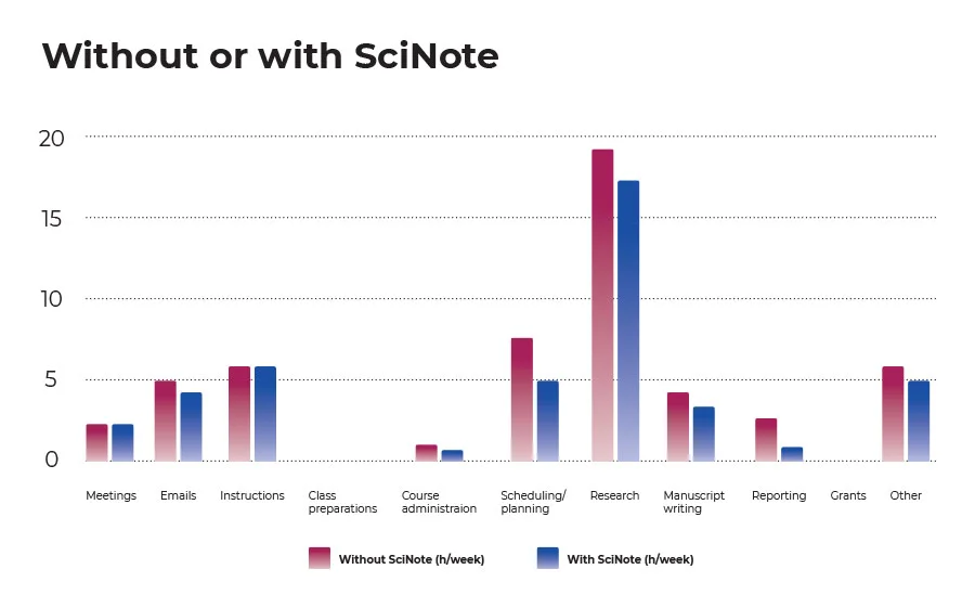Scientific research is evolving at an unprecedented pace, generating vast amounts of data and documentation. Managing this wealth of information efficiently is a challenge that traditional paper-based systems struggle to meet. In response, Electronic Laboratory Notebooks (ELNs) have become indispensable tools for scientists and researchers. However, the successful implementation of ELN software requires careful planning and adherence to best practices. This article delves into the nuances of streamlining scientific documentation through ELN software, offering insights into the key practices that ensure a smooth and effective implementation process.
Understanding Electronic Laboratory Notebooks
Before delving into best practices for ELN software implementation, it’s crucial to understand what Electronic Laboratory Notebooks are and how they differ from traditional paper-based systems.
Definition of ELNs
Electronic Laboratory Notebooks are digital alternatives to traditional paper notebooks used by scientists and researchers. They provide a secure and organized platform for recording, managing, and sharing experimental data, procedures, and observations. ELNs offer numerous advantages, including enhanced collaboration, data integrity, and streamlined documentation processes.
Key Features of ELNs
- Data Organization: ELNs facilitate the systematic organization of experimental data, allowing users to categorize information based on experiments, projects, or specific criteria.
- Collaboration: ELN software promotes collaboration by enabling multiple users to access and contribute to the same set of experiments. This fosters teamwork and accelerates the research process.
- Searchability: Robust search functionalities make it easy to locate specific experiments, protocols, or data points within the vast repository of scientific documentation.
- Data Security: ELNs often come equipped with advanced security features, ensuring the confidentiality and integrity of sensitive research data.
- Integration: ELNs can seamlessly integrate with other laboratory instruments, data analysis tools, and databases, creating a cohesive ecosystem for scientific research.
Best Practices for ELN Implementation
Implementing ELN software involves more than just adopting new technology; it requires careful planning and consideration of various factors. The following best practices ensure a successful and efficient Return on investment when implementing SciNote ELN.
1. Needs Assessment and Goal Definition
Before selecting and implementing ELN software, conduct a thorough needs assessment to understand the specific requirements of your research team or laboratory. Define clear goals for adopting ELN software, such as improving collaboration, enhancing data integrity, or complying with regulatory standards.
2. User Training and Involvement
Smooth implementation hinges on the effective training of users. Provide comprehensive training sessions to familiarize researchers with the features and functionalities of the chosen ELN software. Additionally, involve end-users in the selection process to ensure that the chosen solution aligns with their workflow and preferences.
3. Customization for Specific Workflows
ELN software should be adaptable to the unique workflows of your laboratory. Ensure that the chosen solution allows for customization of templates, experiment structures, and data entry forms. This tailoring ensures that the ELN seamlessly integrates into existing processes, minimizing disruption.
4. Data Migration and Integration
Efficient data migration from existing systems to the ELN platform is crucial for a seamless transition. Verify that the chosen ELN software supports the import of data from various file formats and databases. Integration capabilities with laboratory instruments and data analysis tools further enhance the software’s utility.
5. Data Security and Compliance
Given the sensitive nature of scientific data, prioritize the security features of the ELN software. Choose a solution that offers robust access controls, audit trails, and encryption mechanisms. Additionally, ensure that the ELN complies with relevant regulatory standards and data protection laws.
6. Scalability for Future Growth
Select an ELN solution that can scale alongside the growth of your research activities. Consider the potential increase in the volume of data and users, and verify that the chosen software can accommodate these changes without compromising performance or data integrity.

7. Vendor Support and Updates
Choose an ELN vendor that provides reliable customer support and regular software updates. A responsive support system is essential for addressing issues promptly, while frequent updates ensure that the software remains compatible with evolving technologies and security standards.
8. Pilot Testing and Feedback
Before a full-scale implementation, conduct pilot testing with a small group of users to identify potential issues and gather feedback. Use this feedback to fine-tune the implementation process and address any user concerns. This iterative approach enhances user satisfaction and minimizes disruptions during broader deployment.
9. Continuous Training and Support
The learning curve for ELN software may vary among users. Establish an ongoing training program to support users as they become more familiar with the software. Provide resources such as tutorials, documentation, and a dedicated support channel to address queries and challenges.
Advantages of ELN Software Implementation
Implementing best electronic lab notebooks software offers numerous benefits that significantly impact the efficiency and productivity of scientific research.
1. Time Efficiency
ELNs streamline data entry, retrieval, and analysis processes, saving researchers valuable time. Automation features reduce manual tasks, allowing scientists to focus on the core aspects of their work.
2. Collaboration Enhancement
ELNs facilitate real-time collaboration among team members, whether they are in the same laboratory or working remotely. This collaborative environment promotes knowledge sharing and accelerates the pace of research.
3. Data Integrity and Traceability
Digital documentation in ELNs ensures data integrity by minimizing the risk of errors associated with manual entry. Audit trails and version control features provide a clear record of changes, enhancing data traceability and compliance.
4. Regulatory Compliance
ELN software often comes equipped with features that support compliance with industry regulations and standards. This is particularly important in fields such as pharmaceuticals and biotechnology, where adherence to regulatory requirements is paramount.
5. Cost Savings
While there is an initial investment in ELN software implementation, the long-term benefits include cost savings associated with reduced paper usage, improved operational efficiency, and minimized risks of data loss.
Overcoming Challenges in ELN Software Implementation
Despite the numerous advantages, the implementation of ELN software may encounter challenges. Understanding these challenges is crucial for developing effective strategies to overcome them.
1. Resistance to Change
Resistance to adopting new technology is a common challenge. Address this by emphasizing the benefits of ELN software, providing adequate training, and involving users in the decision-making process.

2. Data Migration Complexity
The complexity of migrating data from existing systems to the ELN platform can pose challenges. Thoroughly plan the migration process, and if necessary, seek assistance from the ELN vendor or IT experts.
3. Integration Issues
Ensuring seamless integration with existing laboratory instruments and software can be challenging. Choose an ELN solution with robust integration capabilities and work closely with IT specialists to address any compatibility issues.
4. Security Concerns
In the age of increasing cyber threats, security concerns are valid. Select ELN software with advanced security features, conduct regular security audits, and educate users about best practices for data protection.
5. User Adoption Challenges
The success of ELN implementation relies on user adoption. Address challenges by providing ongoing training, creating user-friendly interfaces, and actively seeking and incorporating user feedback.
Conclusion
Electronic Laboratory Notebooks play a pivotal role in modern scientific research by revolutionizing the way data is recorded, managed, and shared. Implementing ELN software is a strategic move that requires careful planning, user involvement, and adherence to best practices. By conducting a thorough needs assessment, providing effective training, and addressing challenges proactively, laboratories can streamline scientific documentation, enhance collaboration, and propel their research to new heights.














